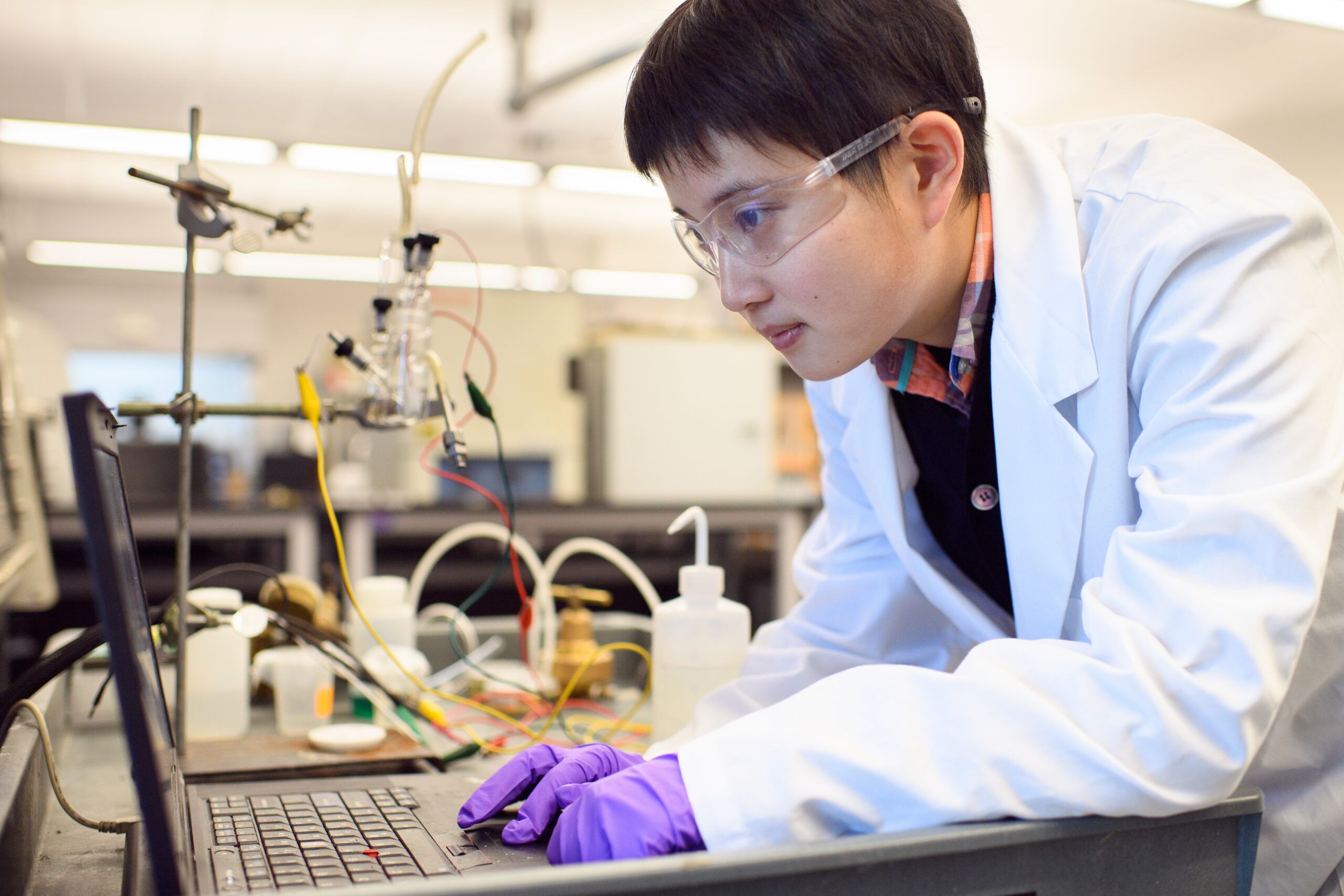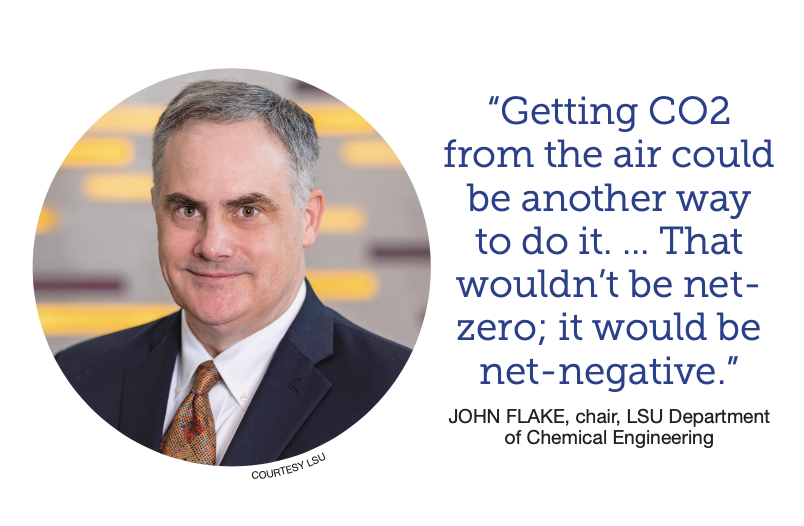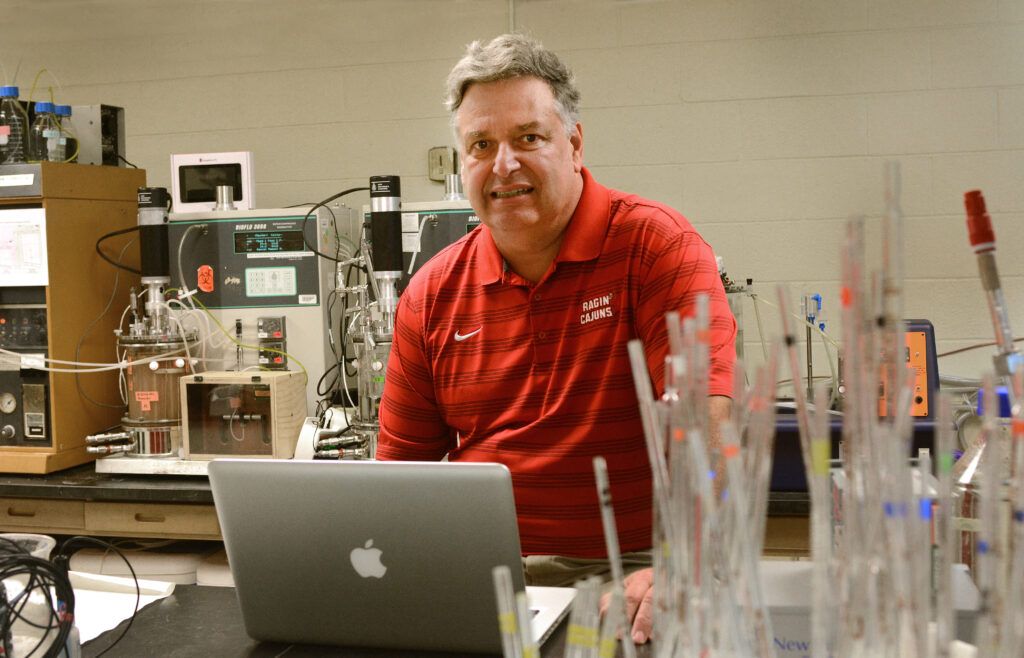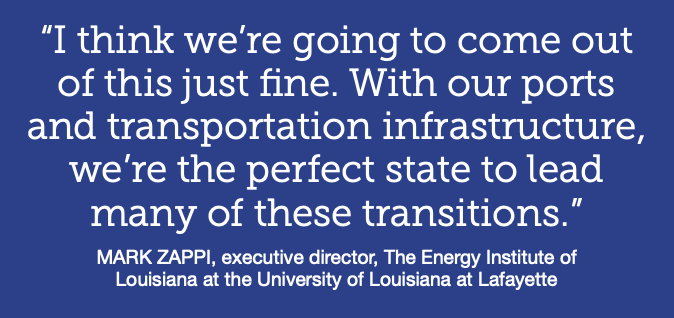
Louisiana industry’s movement away from traditional forms of energy has begun. Biofuels, hydrogen, green ammonia, and the utilization of carbon dioxide are each getting their own attention, but the pace in which they’ll become reality is up for debate.
Demand will be the primary driver. There is a growing worldwide need for net-zero products, and new markets for alternative fuels are being developed at an accelerating pace. The marine industry, for example, is already fabricating E-methanol- and hydrogen-fueled watercraft, and ports such as the Port of South Louisiana are preparing themselves for the eventuality of e-methanol bunkering.
As a supplier, CF Industries in Donaldsonville has made significant recent investments in its operations to produce green ammonia to meet demand for low-carbon products in the agriculture industry, and to provide an alternative fuel for the maritime industry (hydrogen is a component of ammonia).
The company’s 20-megawatt alkaline water electrolysis plant will produce the green hydrogen, which it will use to produce 20,000 tons per year of green ammonia once the project is complete in 2023.
Greg Upton, associate professor of research at the LSU Center for Energy Studies, says there’s no turning back if local industry wants to remain competitive in this bold new future. The boom days of Louisiana’s upstream oil market will likely never return, but the state will remain a prominent exporter of refined products, liquid fuels, chemicals and plastics. That means industry will need to take a leadership role as the world transitions to alternative fuels and net-zero products.
“While access to hydrocarbons might change over time, the manufacturing piece will remain,” Upton says. “It’s exciting to talk about hydrogen and ammonia and being able to get those things from a source that’s not hydrocarbon based. It could become a long-term economic stabilizer for our region.”
That only happens, though, if local industry can decarbonize at a pace consistent with the rest of the world. “If we’re unable to decarbonize we’re not going to have a comparative advantage or see growth over the long term,” Upton says.
At the moment, south Louisiana industry seems to be on track—or even leading—the world in its efforts, with Upton pointing to biofuels, CCUS (Carbon Capture, Utilization and Storage) and green ammonia investments as the most prominent examples.
He expects the first Class 6 well permits to be issued for local CCUS projects later this year or in 2023, and hopes that the Louisiana Department of Natural Resources eventually will be given regulatory primacy over the permitting process in the same time frame.
Upton is confident that industry will eventually find more profitable ways to achieve their net-zero goals. “Because of the policy climate, the investors and the fact that consumers are willing to pay a premium for low-carbon products … owners are pragmatically saying they need to do R&D in this energy transition.”
Upton cites Shell’s recent donation of some $27.5 million donation to LSU as an example. The money will, in part, create the LSU Institute for Energy Innovation, which “will bring together our energy-related efforts at the intersection of science, engineering, law, social science, and policy, creating a national model for energy-related collaboration,” according to an announcement.
Mark Zappi, executive director of the Energy Institute of Louisiana at the University of Louisiana at Lafayette, says no matter what happens, Louisiana has a global reputation of resiliency “and that resiliency is going to be our biggest strength.
“The switch to hydrogen, for example. If we can get large enough volumes and can store it, that flip is not going to be particularly hard for Louisiana industry,” Zappi adds. “… I think we’re going to come out of this just fine. With our ports and transportation infrastructure, we’re the perfect state to lead many of these transitions.”
Still, Zappi says transitioning from carbon-based fuels will be an immense technical challenge.
“It’s not going to happen tomorrow,” he adds. “Everybody is still getting in their cars and still flying, and our number one source of fuel is carbon based. That’s not going to change dramatically fast. The biggest question is what can technology enable us to do and do affordably? Nevertheless, I feel if we don’t do this in Louisiana somebody else is going to do it for us. We have to move toward change.”
WHAT TO DO WITH CO2?
John Flake, department chair in LSU’s Department of Chemical Engineering, is most excited about the potential of CO2 as a low-cost fuel source.
Unfortunately, the focus to date has been on capturing and sequestering the industrial byproduct. The problem with that, he says, is in the cost and complexity of the process. The CO2 must first be captured, cleaned and compressed, then shipped somewhere for injection.
Flake is researching ways to utilize carbon dioxide as an alternative fuel in the conversion of ethane to ethylene, which is used in everything from plastic products to clothing to detergents and hand soaps.

“With ethane, you’re already using a fossil fuel (ethane is derived from natural gas), then you have to utilize a lot of energy to convert it to ethylene,” Flake says. “Guess where that energy comes from? You have to burn more natural gas, so for every kilogram of ethylene you make, you generate about a kilogram of CO2.”
The goal, therefore, should be to capture and utilize CO2 as a feedstock. While that currently is an expensive proposition, Flake says there could be other methods of utilization not necessarily derived from an industrial process.
“Getting CO2 from the air could be another way to do it,” he adds. “In that case, to make a kilogram of ethylene you would need something like negative-3 kilograms of CO2 for every kilogram of ethylene. That wouldn’t be net-zero; it would be net-negative.”
In that case, industrial owners such as Dow in Plaquemine could potentially bypass the sequestration of its CO2 and instead pull it from the air to make ethylene, and still achieve carbon neutrality.
LSU recently received $5 million of a $50 million grant from the U.S. Economic Development Administration grant to research and develop a clean hydrogen cluster in south Louisiana, of which Flake’s department will receive about $3 million for researching CO2 utilization.
A big part of his research will focus on electrolysis in the ethane-
to-ethylene conversion process, whereby two electrodes separate a compound into its more basic components. “We’ll have a water electrolyzer that will make hydrogen and oxygen, and then a CO2 electrolyzer that will make products such as ethylene,” Flake says. All of these technologies could one day help achieve a 50% reduction in CO2 emissions within 30 years.
“We know how to do it … it’s just not competitively priced yet,” he adds. “The problem is that it takes a lot of electricity. You ramp that up to scale and you’re talking about millions of amps of current that you would need.”
And in Louisiana, some 85% of electricity is created with fossil fuels. “My hope is that Louisiana will turn more nuclear,” he adds. “We’ve had two nuclear plants in Louisiana that have run with no problems for more than 30 years. My feeling is that we’ll need a lot more to be able to electrify.”


LSU’s Petroleum Engineering Department will also receive a portion of the grant money to upgrade the technology at its Petroleum Engineering Research & Technology Transfer (PERTT) laboratory for the purpose of carbon testing. The department hopes to drill a new well and install a surface flow loop specifically tailored to CO2.
Research developed through testing at PERTT labs is designed to create an environment where LSU can safely test carbon capture and carbon sequestration methods. Carbon sequestration, especially subsurface carbon sequestration, is going to involve injecting CO2 gas into the subsurface and sealing it up in geological formations.

Flake admits that despite the potential of CO2 utilization, most owners will rely primarily on sequestration—at least in the beginning—for meeting their carbon goals. No matter what happen, it could be a “boom” for industry.
“You have this economic opportunity of putting this (CO2) back,” he says. “In terms of construction jobs, the revenue from building these things, the revenue from converting CO2 … there’s this weird dynamic where both Republicans and Democrats are behind it, but for different reasons.”






